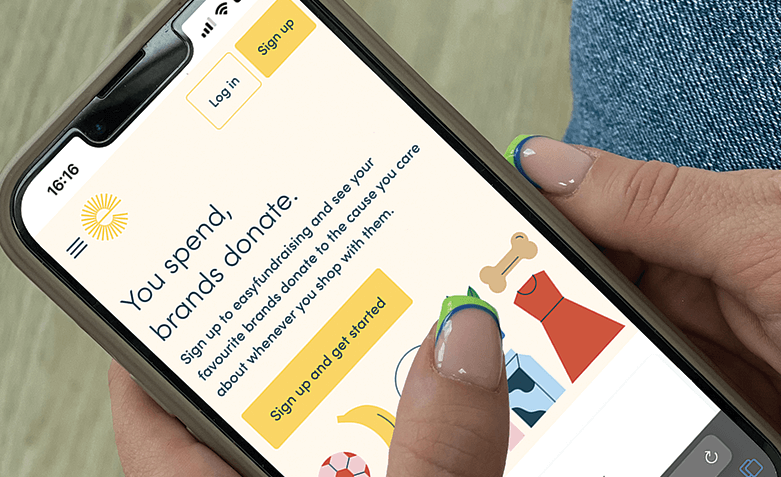
Understanding Crowdfunding
Crowdfunding is a way of raising money for personal fundraising campaigns, charities, non-profits and businesses. It involves securing small donations on a large scale to achieve your goals. As you’re only asking for small amounts of money, people are often likely to part with their cash if they believe in your goal. But a lot of small donations can make a big difference.
For crowdfunding to be successful, it’s vital to create an engaging story to make people believe in your cause and develop an emotional connection with your campaign. And because you need a lot of people to donate small amounts, it will live or die on how well you promote it. Here’s what you need to know about crowdfunding, with some helpful tips along the way.
Different Types of Crowdfunding
There are three main types of crowdfunding.
Donation-Based Crowdfunding
This is where people give to a particular cause or goal out of goodwill and don’t expect anything in return. Often, this kind of crowdfunding is used for personal fundraising and charitable fundraising for schools, community groups and faith-based organisations.
Rewards-Based Crowdfunding
With rewards-based crowdfunding, supporters receive something in return for their donations if the goal is hit. An example of this could be a wildlife organisation asking for funds through crowdfunding, with specific layers of funds able to be chosen by supporters. Each layer could open up a new reward. For example, the first could be a cuddly toy, the second could be sponsoring an animal and the third a unique experience at the zoo.
Equity-Based Crowdfunding
This type of crowdfunding is used more in the business sphere. When crowdfunding first began, it was a way for start-ups to secure funding for their business idea, and it’s still used in this way today. It involves multiple people donating small amounts for small stakes in the business. If the start-up proves to be successful, their shares increase in value further down the line.
Planning your Crowdfunding Campaign

Considering crowdfunding for your organisation? You’ll need to think about the following when it comes to planning:
Setting Clear Goals
Why do you want to raise funds in the first place? How much do you want to secure?
Before you set up your crowdfunding campaign you need to set clear goals. The SMART principle is key here. Your goals should be Specific, Measurable, Achievable, Relevant and Time-Bound.
You want to set a goal that’s achievable, that’s realistic for people to get behind, but also across a specific time period – if there’s a little time pressure for people to donate it may give them the push to not put it off and to do it now.
Crafting Your Story
Effective crowdfunding all comes down to good storytelling. So, it’s time to tell your story.
Start with the why. Clearly explain why you’re crowdfunding and what the funds will be used for. This could be new facilities at your animal shelter. You may be looking for donations for a personal fundraising effort on behalf of a charity or it could be PTA fundraising for a new classroom at the school. Whatever the reason, you need to give people something to believe in. Why will the funds make a huge difference? Who is it affecting? Why do these people/animals need help? Creating an emotional connection is so important, so try and use emotive language when you craft your story.
Your goals will also play into your storytelling too. Why have you chosen that specific amount for your goal? Explain how you need to achieve that specific target and how even the smallest of contributions will help you get there.
Don’t underestimate the importance of your story when it comes to setting up your fundraising campaign and promoting it effectively. Everything hangs on it.
Creating a Budget
Just like with many fundraising initiatives, crowdfunding campaigns often require a little capital to get started. This is especially the case when it comes to rewards-based crowdfunding, as you’ll need the cash to be able to provide the various rewards you’re going to offer.
You’ll also need to consider your promotion. Social media will be crucial, so you may need to look at employing someone to manage this on behalf of your organisation if you don’t have the time yourself.
Platform fees are also a key consideration. This may not require an upfront payment, but they will likely be taken from the donations you receive. For example, on GoFundMe, for charity fundraising there is a fee of 1.9% + 20p for every donation, and for personal fundraisers it’s 2.9% + 25p. You’ll need to factor this into your calculations and overall budget of how much money you can potentially make.
Launching your Crowdfunding Campaign

So, how do you get set up? This is what you need to do.
Choosing the Right Platform
You have a variety of crowdfunding platforms to choose from. They include:
GoFundMe: This is the perfect platform for crowdfunding for personal efforts, charities and community groups. You can create your own fundraising page and secure donations through the platform without having to provide anything in return to your supporters. With GoFundMe, you can access your money in around two to five days from when donations are made. There’s no deadline for your crowdfunding campaign either.
JustGiving: JustGiving is very similar to GoFundMe, and is a great choice for personal fundraising, charities, sports teams and community organisations. Again, you can set up your own page, promote your cause and secure donations. Just like GoFundMe, there are fees to consider too. With JustGiving, it may take around 14 days for you to be able to access your funds. You have to set a deadline for your crowdfunding campaign with JustGiving, although you can easily log into your account to extend this.
Patreon: This is a good platform if you want to give your supporters something back for donating. You can sell products digitally to your supporters in exchange for a subscription fee. It works if you have a consistent run of products to provide to people and enables you to secure ongoing funds.
Hubbub: Ideal for universities that are crowdfunding for students and alumni projects. You can create your own branded crowdfunding hub which features your own brand, logo and site copy. It also helps with donor retention, acquisition and stewardship.
Ethex: Perfect for organisations that have an ethical mission. It’s a simple platform that enables people to invest in businesses in a way that positively impacts society.
Promoting your Campaign
Once you’ve set up on your chosen platform, you’ll need to create a page about your organisation and your campaign. This where your storytelling really needs to come to the fore. Remember to use emotive language, as well as images and videos where you can.
Then, you’ll need to promote it to get it in front of people and to get them backing your campaign. So, where do you start?
Social media should be your first port of call. Again, storytelling really comes into it with social media. You want to educate people about your cause, pull on their heartstrings, but also make it easy to donate. Include imagery and videos around your cause. Showcase your important work and why funds are essential, and always include links back to your crowdfunding page. If you execute your social media well with heartfelt stories, strategic hashtags and engage with influential people in your sector, you have the opportunity to increase your reach and connect with a wider audience.
Email marketing is vital too. If you already have an engaged email list that you regularly connect with through your ongoing emails – whether weekly PTA emails, update emails from your animal rescue or weekly emails from your church – include your crowdfunding campaign within your emails. Again, build a story around it and make it easy for people to visit your page and donate. While social media offers the chance to engage with a wide audience, your emails are the place to communicate with your existing audience that you know are already engaged with your cause. It’s a great opportunity to secure donations.
You should also consider engaging with local media in your area to try and secure some PR coverage for your cause. You’ll need to draft a press release telling your story. With PR, it’s all about giving the press a story that they’ll want to cover and that their readers will want to read about. Just explaining your crowdfunding campaign isn’t enough – you’ll need a hook that will grab their attention. Once you’ve got your press release written, prospect the media you want to connect with and then start contacting them. Again, PR offers you an opportunity to get your message out to a wider audience.
Maximising your Crowdfunding Success with easyfundraising

You can use easyfundraising alongside your crowdfunding campaign to help boost your funds.
Leveraging easyfundraising for your Campaign
At easyfundraising, you can raise money for your cause or personal fundraising efforts in a simple and cost-effective way. All you need to do is register as one of our good causes, then your supporters can donate to you whenever they shop online with any of our 7,500+ partner retailers. The crucial thing for your supporters is that it doesn’t cost them anything more than they’re spending with the retailer. There are no extra fees on top.
They simply need to sign up to an account with us (it’s free and takes minutes). When they want to shop, they can select your cause as their chosen good cause. Then they’re free to shop with one of our partner retailers. And when they spend, the retailer will make a donation to you out of the money they spent.
You don’t need to do anything to receive the funds, as it’s all organised between the retailer and us. The only work you have to do is to promote your easyfundraising campaign. When you sign up with us, you can access a suite of tools to help you do it, including email templates, social media templates and WhatsApp templates.
Making Crowdfunding Work for You
When done well, crowdfunding can be an extremely useful way to raise money for your charity, community group, school or personal fundraiser. You’ll need to plan your campaign, choose your platform, and promote it effectively. But if you do, the funds could be rolling in. And don’t forget to sign up to easyfundraising too as an effective way to boost your crowdfunding efforts.
